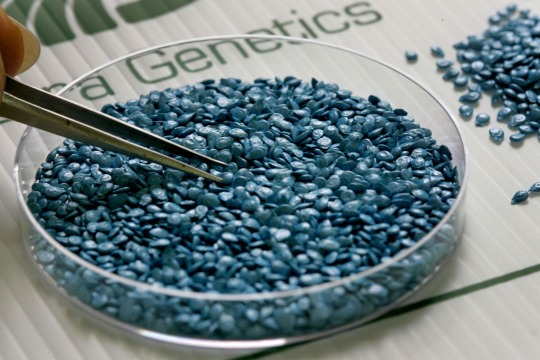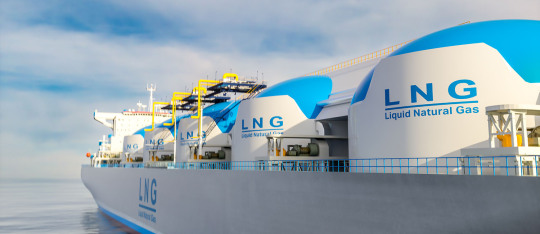Text
Genetically Modified Seeds Market Update: Advancing Agricultural Genetics

The Genetically Modified Seeds Market is transforming agriculture trends by increasing sustainable farming
The genetically modified seeds market has revolutionized agriculture globally by introducing seeds that are resistant to herbicides and resistant to pests and diseases. Genetically engineered crops have enhanced agronomic characteristics like drought tolerance, higher nutritional value, and increased productivity. The global Genetically Modified seeds market is estimated to be valued at US$ 20.34 billion in 2024 and is expected to exhibit a CAGR of 10 percent over the forecast period from 2023 to 2030.
Key players operating in the genetically modified seeds market are Bayer CropScience, BASF SE, Syngenta, and JR Simplot Co. Genetically engineered traits enable farmers to maximize crop yields and minimize crop losses. Some key advantages of genetically modified seeds include herbicide tolerance, insect resistance, drought tolerance, and disease resistance. The growing need to meet the rising global food demand is driving adoption of genetically modified crops globally.
Key Takeaways
Key players: Bayer CropScience, BASF SE, Syngenta, and JR Simplot Co are among the major players in the genetically modified seeds market. Bayer CropScience offers genetically modified maize, soybean and cotton seeds with traits like insect resistance and herbicide tolerance. BASF SE provides drought-tolerant and insect-resistant GM seeds for corn and soy.
Growing demand: The rapidly growing global population is increasing the demand for food. Genetically modified seeds can help boost agricultural productivity to meet rising food demand. Developing nations are increasingly adopting GM crops to ensure food security.
Global expansion: Leading seed companies are expanding their GM seed portfolio and geographical presence globally. International collaborations and partnerships are helping transfer biotechnology to developing nations and expand usage of GM seeds in new markets.
Market Key Trends
A key trend in the genetically modified seeds market is the development of stacked traits. Seed developers are engineering seeds with multiple genetic traits like insect resistance, herbicide tolerance and drought tolerance. Stacked trait seeds offer farmers better pest protection and higher yields. Emerging biotechnologies like gene editing are also allowing more precise genetic modifications while avoiding regulatory hurdles faced by transgenic seeds. This is expected to drive innovation and adoption of new genetically modified crop varieties in the coming years.
Porter’s Analysis
Threat of new entrants: Low cost of production and existing intellectual property rights prevents new competitors from entering the market.
Bargaining power of buyers: Large seed companies possess strong bargaining power as the market is concentrated, allowing them to negotiate lower prices.
Bargaining power of suppliers: Suppliers of biotechnology have some bargaining power in the market due to their specialized expertise and access to new technologies for seed development.
Threat of new substitutes: There is low threat of substitute crops as genetically modified seeds provides higher yields, pest resistance and suitability to varied climatic conditions.
Competitive rivalry: Strong competition exists between major players to invest in seed research and distribution networks to enhance market share.
Geographical Regions
North America accounts for the largest share in the global market as countries like the US, Canada are highly adopting genetically modified crops. Major GM crops grown are soybean, corn and cotton.
Asia Pacific region is witnessing the fastest growth in genetically modified seeds market. Emerging economies like India, China and countries in Southeast Asia are increasingly cultivating Bt cotton and other GM crops to meet rising food demand of growing population. Supportive policies by governments is propelling market expansion in the region.
0 notes
Text
LNG Bunkering Market Dynamics: Balancing Supply and Demand

Here is a 1100 word article on LNG Bunkering with headings and subheadings:
The Rise of LNG as a Marine Fuel
Introduction to LNG Bunkering
LNG (liquefied natural gas) bunkering refers to the process of supplying liquefied natural gas to ships for use as fuel. It allows vessels to comply with increasingly stringent environmental regulations by reducing emissions of sulfur oxides, particulate matter and nitrogen oxides. Shipping currently accounts for roughly 3% of global carbon dioxide emissions, so a transition to cleaner burning LNG can help decarbonize the industry.
Future Outlook
With global LNG demand projected to grow strongly this decade, many analysts anticipate ship bunkering needs will follow suit. More ports will commission facilities to capture emerging sales opportunities and fulfill international obligations to curb air pollution.
Interim solutions using portable tanks and bunkering at anchor should retreat as purpose-built, larger capacity bunker vessels and offshore loading arms become widespread. International standards for LNG bunkering operations are also gaining acceptance to smooth cross-border trades.
Leading owners may aim for full conversion to gas propulsion in some fleet segments within this decade. Slow steaming container ships and cruise liners look especially well suited given their high fuel consumption and lengthy port stays facilitating bunkering. The transition to LNG and future fuels will likely follow diverse pathways suited to each ship type and trade profile. Overall however, LNG is poised to revolutionize marine fuel markets in the coming years.
0 notes
Text
Liquefied Natural Gas Market Impact: Powering Global Economies

Liquefied Natural Gas: Powering the Global Energy Transition
What is it?
Liquefied Natural Gas or LNG refers to natural gas that has been converted to liquid form for ease of storage or transport. Natural gas is primarily composed of methane, making it a fossil fuel. At standard temperature and pressure, natural gas is gaseous. However, at approximately -260°F (-162°C), LNG is condensed into a liquid, reducing its volume by about 600 times and making it easier to transport overseas in specialized cryogenic tankers.
The Future of LNG is Brighter
Overall, long-term fundamentals point towards a promising future for LNG trade as the bridging fuel supporting energy transitions globally. Key reasons for a rosier outlook are:
- Growing demand in Asia led by China and India is expected to drive incremental requirements, backed by government policies favoring the increased use of cleaner-burning natural gas over dirtier fuels.
- Emergence of new LNG importing markets like Pakistan, Bangladesh, UAE and various countries in Southeast Asia and Africa will provide new outlets for expansion.
- Carbon emissions reductions commitments by nations should maintain gas usage advantages compared to alternatives in the transition to lower carbon economy scenarios modeled by organizations.
- Technological enhancements to liquefaction and shipping infrastructure will likely make LNG even more competitive on price while boosting the affordability of natural gas as a wide-spread fuel. This will catalyze additional consumption growth.
- LNG’s versatility as a transportation fuel also offers prospects with rising use of LNG bunkering for ocean-going vessels and heavy-duty trucks over the long-run if infrastructure develops further.
- Sustained oil company participation and upstream investments underpin security and availability of future LNG supplies required to meet the ambitious outlook for natural gas consumption.
In summary, Liquefied Natural Gas is positioned well to play a pivotal role in the global energy landscape for decades to come with its ability to address both economic needs and environmental goals through a cleaner alternative to coal and oil. Its flexible, cross-border delivery characteristics will prove vital for energy security and reliability. The future remains bright for continued trade and capacity expansion of LNG worldwide.
0 notes
Text
Ski Gear and Equipment Battery Market Insights: Exploring Winter Sports Enthusiasts' Needs

Choosing the Right Ski Gear for an Enjoyable Winter Sports Experience
Ski Boots
One of the most important pieces of ski gear is your ski boots. Boots are what connect your feet to your skis and allow you to control your movements on the snow. When choosing ski boots, it's important to find a pair that fit your foot shape and size well. Boots that are too tight or loose can make skiing uncomfortable and reduce your ability to control your skis. Many ski shops offer fitting services where employees can heat mold boots to your foot for a custom fit. Look for boots made of durable materials like plastic or leather that will withstand plenty of use on the slopes without wearing out. Make sure to get boots that are appropriate for your skiing ability as advanced skiers may need boots with stiffer soles for better edge control at high speeds.
Skis
Next you'll need to choose the right pair of skis for your weight, height, ability level and preferred skiing terrain and conditions. There is a wide range of ski types available including all-mountain, powder, carving and mogul skis. All-mountain skis are versatile options that work well in most conditions. Powder skis have wide waists for floating in deep snow while carving skis have narrower waists and stiffer build for high performance carving. Consider your body measurements when selecting ski length as a general guideline is to have skis that come up to your chin. Check that the skis have the right flex for your weight too - too soft and they won't be responsive, too stiff and they may be difficult to control. Pay attention to sidecut radius which determines how easily the skis will turn. Sharper sidecut means quicker, tighter turns that are good for groomed trails. Wider sidecuts work better in crud or powder conditions.
Ski Poles
Quality ski poles are crucial for balance, power and control on the slopes. Look for lightweight yet durable ski poles made from aluminum or carbon fiber. Adjustable poles that can be sized to the skier's height are convenient. Pole baskets or tips on the bottom should provide traction to grip the snow without causing damage to the surface. Some poles feature wrist straps or loops to prevent dropping the poles in case of a fall. Grips should be comfortable, non-slip materials. Adjust the poles so the basket is level with your forehead when standing naturally. This aids in proper pole planting technique which is important for efficient skiiing.
Ski Clothing
Cold weather ski gear consists of insulating base layers, mid layers and protective outerwear designed to keep body heat in while keeping moisture out. Base layers made from wool or synthetic thermal fabrics like polypropylene wick moisture away from the skin and trap radiant heat. Mid layers add additional warmth and should be fleece or similar lightweight insulating fabrics. Waterproof and breathable ski jackets and pants comprise the protective outer layer. Look for loose fitting designs with sealed seams and adjustable vents to allow heat to escape on warmer climbs or descents. Gloves or mittens should be insulated and waterproof with non-slip palm patches for gripping poles. Ski helmets provide protection from head injuries and goggles shield the eyes from ultraviolet rays, wind and flying debris or chunks of snow. Choose polarized lenses for optimum visibility in bright conditions.
Other Accessories
Additional handy items for skiers include backpacks, Duffel bags or roller bags to transport gear, gaiters to prevent snow from getting inside boots, ski socks specially designed to regulate moisture and prevent blisters, ski skins for climbing slopes, avalanche safety equipment like beacons, probes and shovels if venturing into backcountry zones and small essentials like wax, hand and toe warmers, sunscreen and chapstick. For children, look for appropriately sized gear fitted for their body including helmets designed specifically for young heads. Rental equipment may suffice for beginners or occasional users but outfitting with well-fitting, personal gear results in better performance and comfort on the mountain.
Making an Investment
Quality ski equipment represents an investment that should last many seasons if properly cared for and stored during the off-season. To keep gear in top working condition, hand wash fabrics to retain breathability and waterproofing. Inspect boots for cracks or worn seal edges that allow moisture ingress. Service waxless skis with wax or liquid glide products for slippery surfaces. Check bindings for any broken or loose parts and tune annually as recommended by manufacturers. Consider multi-season equipment rentals if usage is infrequent versus owning as purchasing quality gear involves a greater upfront cost. With the right ski gear matched to ability and conditions, skiing or snowboarding can become an enjoyable lifetime sport spent exploring mountain terrain under vast blue skies amid spectacular snowy vistas during winter months.
0 notes
Text
Silicon Anode Battery Market Spotlight: Revolutionizing Portable Electronics

Silicon Anode Holds the Key for the Next Generation of Li-ion Batteries
Introduction
Silicon anode has emerged as one of the most promising anode materials for the next generation of lithium-ion batteries due to its high theoretical lithium storage capacity of 4,200 mAh/g, which is around ten times higher than the currently used graphite anode with 372 mAh/g capacity. The use of silicon anode can significantly boost the energy density of Li-ion batteries, paving way for longer-lasting batteries with higher capacities. Some key advantages of using silicon anode include higher energy density, faster charging ability and ability to be charged from zero to full many more times than conventional graphite anode.
Recent Advances and Commercialization
Significant advances have been made in the past few years towards addressing the challenges of silicon anodes. Among notable ones are stable cycling of porous silicon micro-particles coated with carbon and binders reporting capacity retention of around 80% after 500 cycles. Nanostructured silicon electrodes such as silicon nanoparticles encapsulated in a silicon carbide layer demonstrated stable operation and high coulombic efficiencies. Silicon nanowires and thin films integrated with graphene have shown enhanced cycling stability and rate capability as well. Silicon composite anodes formed with CMC binders have demonstrated high capacities and cycles stability. Several companies are working on commercializing silicon anode technologies and its integration into Li-ion batteries for electric vehicles and consumer electronics in near future holds immense opportunity.
Concluding Remarks
While silicon anode commercialization still presents technical obstacles to overcome, extensive research and recent promising results indicate it is just a matter of time. The potential to significantly boost energy density makes it very compelling for wider adoption in batteries powering our daily lives. Further developments in nanostructuring, binder optimization, electrolyte formulations and surface coatings/passivation can help mitigate volume change issues and stabilize cycling. With continued efforts from both academia and industry, silicon anodes are expected to revolutionize Li-ion batteries and accelerate global transition towards clean energy technologies.
0 notes
Text
Foam Glass Market Insights: Exploring End-User Industries

The Foam Glass Market is poised to grow remarkably with innovations by 2030
The foam glass market comprises materials that are lightweight, insulating and fire resistant. Foam glass is produced by heating an indefinite mixture of glass batch materials, stabilizing agents and blowing agents in a furnace. This results in a structure with a closed-cell porous network comprising small bubbles in a matrix of glass. The strong bonds formed between glass form stable structures with high mechanical strength and thermal insulation. Foam glass finds wide applications as an insulating material in construction, industrial and other sectors due to its excellent properties.
The Global Foam Glass Market is estimated to be valued at US$ 2.17 Bn in 2024 and is expected to exhibit a CAGR of 8.6% over the forecast period 2023 to 2030. Key players like Pittsburgh Corning, Glapor, Owens Corning, Polydros S.A., Misapor AG, Earthstone International, Refaglass, Zhejiang Zhenshen Insulation Technology Corp. are enhancing innovations to expand the market reach.
The foam glass market in North America accounts for the largest share in terms of value. Countries like United States and Canada dominate the market due to high usage in industries like construction and industrial insulation where properties of foam glass are highly valued.
Asia Pacific region is expected to witness the highest growth during the forecast period. Rapid industrialization and infrastructure development in countries like China, India, Indonesia, Vietnam etc. will drive the demand for foam glass as insulating material during the coming years. Increasing per capita income and growing population is also favoring the market growth in Asia Pacific.
0 notes
Text
Margarita Glass Market: Celebrating Craftsmanship in Cocktail Culture

The History and Evolution of the Margarita Glass
Early Origins of Glass Drinking Vessels
Glass has been used for drinking vessels since at least the 1st century AD. The earliest glass bottles were produced in Roman Syria but it was the Venetians in the 13th century who perfected glass blowing techniques and mass-produced glassware including glasses and goblets. These early glass vessels were blown into molds leaving distinctive punts on the bottom. The main types of glasses produced were tumblers and goblets used for wine and other alcoholic beverages. It wasn't until the mid-20th century that the cocktail glass design we know today started taking shape.
Material Advancements - Lead Crystal and Tritan Plastic
Alongside changes in shapes and designs, materials for cocktail glass also advanced. In the late 20th century, lead crystal glasses became popular choices for their brilliance and weight. However, concerns around lead exposure spurred the development of alternative materials. In recent decades, Eastman Tritan copolyester was introduced as a shatter-resistant, BPA-free option that mimics the look of glass. Tritan provided durability for outdoor use without compromising on clarity or style. While "crystal" lead glass remains the premium choice, Tritan plastic margarita glasses are preferable for events with potential risks of breakage and for households with young families. This expansion of materials makes these iconic cocktail vessels accessible to an even wider audience.
0 notes
Text
Silicon Lenses Market Sustainability: Driving Eco-Friendly Optics Solutions

Silicon lens manufacturing using MEMS technology
Silicon lenses can be batch fabricated using mature microelectromechanical systems (MEMS) processes similar to those used to produce computer chips and sensors. This allows precise control over the lens shape and surface quality at a massive scale. In a typical MEMS process, a series of etching and deposition steps are used to transfer a lens profile onto a silicon wafer. First, a photoresist layer is deposited and patterned using photolithography to act as a mask for subsequent etching steps. Then, an isotropic or anisotropic etch is performed to remove silicon and define the underlying lens shape. Additional layers like anti-reflection coatings may also be deposited. After fabrication, the individual lenses can be separated from the wafer to form the final products. The use of MEMS and semiconductor fabrication techniques enables silicon lenses to be mass produced cheaply and consistently with micrometer tolerances.
Silicon (Si) Lenses applications in consumer AR/VR, LiDAR and biometrics
Beyond smartphone cameras, silicon lenses are finding applications in emerging consumer technologies like augmented/virtual reality (AR/VR) and 3D sensing. As discussed above, AR/VR headsets leverage aspherical and freeform corrected silicon lenses for wide angle-of-view optics in compact see-through displays. On the 3D sensing side, silicon microlens arrays are enabling new LiDAR and structured light applications. For example, silicon lenslet arrays focused red lasers and infrared patterns in facial recognition and in-display fingerprint sensors. The precision and consistency of silicon lenses produced using MEMS methods is well suited to the demanding optical tolerances required for 3D image capture and mapping.
As augmented/mixed reality moves towards mainstream consumer markets, high performance wide FOV optics will be critical for immersive experience. Silicon provides a manufacturing platform to repeatedly achieve such advanced optical designs at wafer scale volumes for AR/VR applications. We can also expect to see silicon microlens arrays integrated into more sophisticated 3D camera systems for applications like autonomous vehicles which require robust long range LiDAR sensing. Biometric security using silicon optics is also an area poised for growth as smartphone authentication moves under the display. Overall silicon promises to continue enabling new computational imaging technologies through its strengths in MEMS manufacturing of sophisticated aspherical and freeform lens arrays.
Conclusion
In summary, Silicon (Si) Lenses has emerged as an attractive optical material platform due to the precision and scalability advantages afforded by MEMS fabrication techniques. Especially for high volume consumer applications requiring compact optics, silicon lenses provide a competitive alternative to traditional glass optics. Design flexibility allowing advanced aspherical and freeform profiles also opens new possibilities for optical systems. Looking ahead, the continued adoption of silicon lens technology across domains like AR, 3D sensing, biometrics and more will be driven by silicon's ability to consistently deliver sophisticated optical functions at mass production scales.
0 notes
Text
Bioethanol Market Progress: Advancing Sustainable Fuel Solutions

Bioethanol Market is Powered by Increasing Demand for Cleaner Fuel
Bioethanol is a renewable and cleaner fuel produced from organic matter or biomass. It is used as a gasoline additive to increase octane and improve vehicle emissions. Bioethanol is gaining popularity as a petrol substitute owing to its eco-friendly nature and potential to reduce vehicle carbon emissions by 30%. It is also an excellent substitute for MTBE which poses risk to groundwater supplies.
The Global Bioethanol Market is estimated to be valued at US$ 13.7 Billion in 2024 and is expected to exhibit a CAGR of 9.8% over the forecast period 2024 to 2031.
Growing concerns regarding environmental pollution and depletion of fossil fuels have boosted the demand for cleaner vehicle fuels. Ethanol blends like E10 and E85 allow engine downsizing and reduce crude oil import dependency of nations. The market is driven by stringent emission regulations and policies promoting the use of renewable fuels in the transportation sector.
Porter’s Analysis
Threat of new entrants: The bioethanol market has moderate barriers for new companies to enter due to high capital requirements for setting up plant and machinery.
Bargaining power of buyers: Large fuel companies and automobile manufacturers that buy bioethanol have some bargaining power over suppliers depending on volume of purchase.
Bargaining power of suppliers: A few dominant crop producers and converters who can convert crops and agricultural waste into bioethanol have bargaining power over buyers.
Threat of new substitutes: Alternatives like biodiesel and other advanced biofuels pose some threat as substitutes in the transportation fuel market.
Competitive rivalry: Major players compete intensely on cost and production efficiency to gain market share.
Geographical Regions
North America currently accounts for around 35% of the global bioethanol market value led by the United States which is the largest producer and consumer.
The Asia Pacific region is witnessed as the fastest growing market for bioethanol during the forecast period due to rising demand from China, India and other emerging countries supported by government incentives and mandates for use of renewable fuels.
0 notes
Text
Banana Puree Market Size: Evaluation of Market Share by Application

Banana Puree Market PropellingTowards Healthier Options by Rising Nutritional Demand
Banana puree is a versatile product made from ripe bananas which is puréed or mashed. It offers several advantages over fresh bananas such as extended shelf life, easy transportation, and usage in foods and beverages. Banana puree is high in potassium, fiber, and vitamins which support heart health, digestion and boost immunity. It is commonly used in baby food, yogurt, ice-cream, smoothies, bakery products, and sauces due to its creamy texture and sweet taste.
The Global Banana Puree Market is estimated to be valued at US$ 381.7 Mn in 2024 and is expected to exhibit a CAGR of 9.2% over the forecast period 2023 to 2030.
Key players operating in the Banana Puree market are Symrise AG, Döhler GmbH, Kiril Mischeff, Riviana Foods Pty Ltd, Nestlé S.A., The Hain Celestial Group Inc, The Kraft Heinz Co., Ariza B.V., Newberry International Produce Limited, Grünewald Fruchtsaft GmbH, Tree Top Inc., Hiltfields Ltd., Shimla Hills Offerings Pvt. Ltd., Antigua Processors S.A., and SunOpta Grains and Foods Inc. The growing demand for healthy and nutritious breakfast and baby food products is driving the banana puree market. Manufacturers are focusing on new product development using banana puree to capitalize on the rising nutritional demand. The global expansion of major food chains and quick service restaurants is another key factor propelling the banana puree market.
Key takeaways:
Key players operating in the banana puree market are focusing on capacity expansion plans and new product launches to strengthen their market share. The growing health-conscious consumer base is increasing the demand for nutritional and plant-based foods and beverages made using banana puree. Major banana puree producers are exploring opportunities in emerging markets of Asia Pacific and Latin America through exporting activities and contract manufacturing agreements.
Market key trends:
The rising demand for convenient and healthy packaged food options is a key trend in the banana puree market. Manufacturers are introducing single-serve packs and improved recipes to increase banana puree usage in snacks and meal replacements. Innovation in processing technologies is helping players improve the taste, texture and shelf life of banana puree products. The focus on minimally processed and clean label products is another emerging trend as consumers are preferring ingredients they can easily recognize.
0 notes
Text
Rust Lubricant Market Insights: Impact of Technological Innovations

Rust Lubricant: Innovative Approach Unveiled to Combat Corrosion A Promising Solution for Durability
Introduction to Rust and Corrosion
Rust is a form of corrosion that forms on iron and iron-based alloys like steel when they come into contact with oxygen, usually in the presence of water or air moisture. It is a natural process where the iron atoms in the material react with oxygen to form iron oxide, which appears red-brown in color. Unchecked rusting can lead to severe material deterioration over time. To protect iron and steel surfaces from corrosion damage, it is important to apply suitable rust prevention products like oxidize lubricants.
Types of Oxidize Lubricants
There are different types of oxidize lubricants available in the market depending on their formulation and method of application:
- Penetrating Lubricants: These are thin, liquid lubricants that can seep deep into confined spaces to disperse moisture and oxygen. They contain oils and corrosion inhibitors to form a protective barrier. Commonly used for areas difficult to reach.
- Grease Lubricants: Thick, grease-like consistency makes them ideal for covering large surface areas. They form a durable moisture seal and have corrosion fighting additives suspended in a greasy base. Suitable for outdoor metal structures.
- Film Lubricants: Dry quickly to leave behind a continuous, microscopic lubricating film over metal. The non-greasy formula does not collect dust or dirt. Used extensively in automotive, industrial and household applications.
- Trigger Spray Lubricants: Convenient spray cans containing rustfighting oil or grease solutions. Allow for targeted, even application on small or detailed components. Used for tools, hardware, equipment etc.
How Oxidize Lubricants Work
0 notes
Text
Rigid Packaging Market Dynamics: Influence of Changing Consumer Behavior

Rigid Packaging: A Sustainable Solution for Product Protection and Distribution
Introduction to Stiff Packaging
Rigid Packaging refers to packaging formats that hold their shape independently without needing containment or support. Some common examples of Stiff Packaging are bottles, jars, cans, boxes, cartons, trays, containers and tubes. Stiff Packaging provides protection to products from external factors like moisture, pressure, breakage during transportation and storage.
Thus, Stiff Packaging presents a sustainable solution to satisfy all stakeholders in the packaging value chain from brand owners to consumers to waste management ecosystem.
Applications of Stiff Packaging in Key Sectors
Given below are some major sectors utilizing Stiff Packaging solutions:
Food Industry: Canned foods, bottled beverages, dairy products, frozen foods, sauces, condiments, oils etc rely extensively on glass jars, metal cans and plastic bottles fo
In conclusion, rigid packaging will continue fulfilling its integral product protection function across industries through constant innovations. With sustainable approach and collaborative efforts, it presents an eco-friendly solution for product security and distribution needs of modern supply chains.
0 notes
Text
Distributed Generation Market Forecast: Trends and Predictions
Distributed Generation Market is Transforming the Power Sector through Increased Reliability and Sustainability
The distributed generation market is seeing growing adoption of decentralized power production technologies driven by an increasing demand for reliable and clean energy sources. Distributed generation involves electricity generation at or near the point of consumption from sources such as solar photovoltaic panels, wind turbines, reciprocating engines, gas turbines, fuel cells, and micro hydro plants. Advantages include reliability as the energy is produced locally reducing transmission losses and dependency on grid failures, sustainability as many options utilize renewable resources like solar and wind, lowered energy costs through offsetting consumption from the grid, and carbon emission reductions. The Global Distributed Generation Market is estimated to be valued at US$ 364.46 Billion in 2024 and is expected to exhibit a CAGR of 14% over the forecast period 2024 to 2031.
Key Takeaways
Key players operating in the distributed generation market include Siemens AG, General Electric, Schneider Electric SE, Mitsubishi Motors Corporation, Capstone, Activ Solar GmbH, Ballard Power Systems Inc., Fortis Wind Energy, GE Power & Water, Juwi Inc., Sharp Corporation, Cummins Inc., and Caterpillar Inc. Distributed generation solutions from these companies are seeing increasing adoption to meet the growing demand for reliable and low-cost energy across sectors like commercial, residential and industrial.
The demand for distributed generation is rising rapidly driven by factors such as need for continuous power supply, integration of renewable sources, backup during grid failures, carbon emission reduction goals of nations and enterprises, and cost benefits of decentralized energy production. Distributed energy resources are playing a critical complementary role to centralized power grids in meeting escalating electricity demand globally in a sustainable manner.
Major players are also expanding their distributed generation business globally, especially in regions with increasing clean energy targets such as Asia Pacific and Europe. Strategic partnerships and mergers and acquisitions are allowing companies to establish presence and offer customized localized solutions catering to different power requirements across global markets.
Market Key Trends
One of the key trends in the distributed generation market is the increasing focus on integrating renewable resources like solar and wind to produce clean and reliable off-grid power. Continuous technology advances are enabling greater efficiencies and control capabilities for distributed solar PV and wind systems. This is driving higher adoption of renewable distributed generation solutions globally. The proliferation of renewable distributed generation systems is expected to significantly reduce carbon emissions from the power sector in the coming years.
Porter’s Analysis
Threat of new entrants: The distributed generation market requires significant investment capital which makes it difficult for new players to enter the market. However, technological advancements are lowering entry barriers.
Bargaining power of buyers: Buyers have significant bargaining power due to the presence of many players providing similar products and services in the distributed generation market.
Bargaining power of suppliers: A few large players dominate the supply of critical components for distributed generation systems, giving them strong bargaining power over buyers.
Threat of new substitutes: Technological developments in energy storage are increasing the viability of renewable energy as a substitute for distributed generation sources.
Competitive rivalry: The distributed generation market consists of numerous global players and intense competition on factors like product quality, technical support, pricing and customized solutions.
Geographically, North America holds the largest share of the distributed generation market in terms of value due to supportive government policies and incentive programs driving growth in the region.
The Asia Pacific region is expected to grow the fastest in the distributed generation market during the forecast period. Rapid industrialization and urbanization along with rising energy demand in developing countries of the region such as China and India are contributing to the market growth. Supportive renewable energy targets and investments by governments will further support distributed generation adoption in Asia Pacific.
0 notes
Text
Disinfectants Market: Supply Chain Optimization Strategies

Disinfectants Market is in Trends by Sustainable Production Practices
The global disinfectants market consists of various cleaning agents that help eliminate or inhibit the growth of microorganisms on inanimate surfaces. Disinfectants are widely used for sterilizing hospital equipment, disinfecting surfaces in public places, sanitize kitchen countertops, and clean bathrooms. They play a crucial role in killing bacteria and preventing the spread of infectious diseases. Common disinfectants include alcohol, bleach, hydrogen peroxide, quaternary ammonium compounds, benzoic acid, and triclosan. These cleaning products provide protection against germs without harming the environment.
The Global Disinfectants Market is estimated to be valued at US$ 49.0 Bn in 2024 and is expected to exhibit a CAGR of 6.0% over the forecast period 2023 to 2030. Key players operating in the disinfectants market are Solvay S.A., Unilever Group, Evonik Industries AG, 3M Company, Procter & Gamble Corporation, dowdupont Inc., Lanxess AG, BASF S.E., The Clorox Company, and Reckitt Benckiser Plc.
Key Takeaways
Key players operating in the disinfectants are Solvay S.A., Unilever Group, Evonik Industries AG, 3M Company, Procter & Gamble Corporation, dowdupont Inc., Lanxess AG, BASF S.E., The Clorox Company, and Reckitt Benckiser Plc. These major companies are focusing on sustainable production methods to minimize environmental footprint.
The demand for disinfectants is growing rapidly due to increasing consumer awareness about hygiene and ongoing COVID-19 pandemic. Frequent use of cleaning agents in households, industries, and commercial spaces is driving the market growth.
Globally, the disinfectants market is expanding in developing regions owing to rising consumer spending, rapid urbanization, and improving access to healthcare facilities. Major players are investing in Asia Pacific and Latin American markets to capitalize on high growth opportunities.
Market Key Trends
One of the key trends gaining traction in the disinfectants market is the development of bio-based and plant-derived formulations. Major players are investing in R&D activities to manufacture sustainable cleaning products from natural ingredients like citric acid, essential oils, and aloe extracts. These eco-friendly alternatives provide effective disinfection without releasing toxic chemicals into the environment. Their growing popularity is expected to shape the future of the industry.
Porter's Analysis
Threat of new entrants: High capital requirements and efficiency barriers make it difficult for new brands to enter the market. Bargaining power of buyers: Large buyers can negotiate lower prices, especially for commodity disinfectants. Bargaining power of suppliers: Suppliers of disinfectant raw materials have some pricing power due to the specialized nature of inputs. Threat of new substitutes: New substitute products that are safer or more environment-friendly pose some threat. Competitive rivalry: Large industry players compete aggressively on brand image, pricing, and product innovations.
Geographical Regions
North America currently holds the highest value share in the global disinfectants market due to stringent hygiene regulations and widespread awareness. Developed countries in Europe also account for a major portion of global market value.
The Asia Pacific region is expected to witness the fastest growth during the forecast period. Rapid urbanization, growing middle class, and rising awareness about health and hygiene are driving increased demand for disinfectants in India and other developing Asian countries.
0 notes
Text
Anti-acne Cosmetics Market: Revolutionizing Acne Treatment with Innovation

"Anti-acne Cosmetics Market is evolving with increasing consumer preference for Natural Ingredients"
Anti-acne cosmetics products contain active ingredients such as benzoyl peroxide, salicylic acid, tea tree oil, retinoids and others that help kill the bacteria causing acne and reduce inflammation. These products are available in various forms like creams, gels, face washes and spot treatments. Acne is one of the most common skin conditions that directly affects the psychological well-being of an individual, especially teenagers. Anti-acne cosmetics help control acne breakouts and clear blemishes to restore confidence. With growing awareness, consumers are shifting towards natural ingredients based formulations for their mildness and fewer side effects.
The Global Anti-acne Cosmetics Market is estimated to be valued at US$ 2591.87 Mn in 2024 and is expected to exhibit a CAGR of 4.8% over the forecast period 2023 to 2030.
Key Takeaways
Key players operating in the Anti-acne Cosmetics are Clinique Laboratories, LLC., Neutrogena, Ancalima Lifesciences Ltd., Guthy-Renker, Murad Inc, L'Oréal S.A., The Mentholatum Company Inc., Kosé Corporation, and Galderma Laboratories LP.
Key players operating in the Anti-acne Cosmetics are focusing on expanding their product lines with natural and herbal ingredients to cater growing consumer demand. Clinique Laboratories, LLC., Neutrogena, Murad Inc are some of the leading brands.
Growing awareness about implications of long-term use of chemical based formulations and advantages of naturals are fueling demand for herbal and ayurvedic anti-acne products.
Leading companies are expanding their footprint in emerging markets of Asia Pacific and Latin America to tap higher growth potential offered in these regions.
Market Key Trends
Preference for organic and natural anti-acne ingredients like teas tree oil, neem, wheat germ oil among others is a major trend. Products containing natural actives are perceived to have minimal side effects and suit sensitive skin better. Manufacturers are focusing on clean label and transparent formulation comunication to attract consciouss buyers.
Porter’s Analysis
Threat of new entrants: Cost of production and marketing for anti-acne cosmetics is relatively high due to stringent manufacturing regulations.
Bargaining power of buyers: Presence of numerous established brands gives buyers bargaining power to choose from wide range of anti-acne cosmetics options.
Bargaining power of suppliers: Raw material prices can influence production costs for anti-acne cosmetic manufacturers if suppliers possess stronger bargaining power.
Threat of new substitutes: Emergence of new natural substitutes poses substitution threat to established anti-acne cosmetic brands.
Competitive rivalry: Intense competition exists between global leaders like Clinique, Neutrogena and new regional players to capture greater market share.
Geographical Regions
North America currently holds the largest share of the global anti-acne cosmetics market, with the United States being the major revenue generator. Wide availability of anti-acne cosmetic products from major brands and rising cosmetic expenditure drive the market growth in the region.
The Asia Pacific region is expected to witness the fastest growth during the forecast period owing to increasing incidents of acne among young population coupled with rising disposable income in developing countries such as China and India. Growing awareness regarding anti-acne cosmetic products and their benefits further supports the market expansion.
0 notes
Text
Anti-Corrosion Coatings Market: Preserving Aesthetic Appeal Amidst Rust Threats

Rise of Anti Corrosion Coatings Market As Infrastructure Modernization Gains Pace
The anti corrosion coatings market is in trends by increasing infrastructure modernization projects across various industries. Anti corrosion coatings provide protection to materials and infrastructure from oxidation and damage caused by various environmental conditions. These coatings form an invisible shield on metal surfaces, prolonging the life of materials and structures. They find extensive application in oil & gas, marine, power generation and construction industries due to their corrosion resistance and durability properties.
The global anti corrosion coatings market is estimated to be valued at US$ 46.90 billion in 2024 and is expected to exhibit a CAGR of 3.8% over the forecast period from 2023 to 2030.
Key players operating in the anti corrosion coatings market are BASF, Ashland Inc., Nippon Paint Co. Ltd., AkzoNobel N.V., Jotun A/S, Axalta Coating System Ltd., The Sherwin-Williams Company, Kansai Paints Co. Ltd., PPG Industries Inc. and Hempel A/S. These companies capture a significant share of the market owing to their broad product portfolio and extensive distribution networks across major countries.
The growing demand from infrastructure, oil & gas and construction industries is projected to drive the anti corrosion coatings market substantially over the forecast period. Rapid urbanization and investments in infrastructure development projects especially in Asia Pacific are increasing the demand for anti corrosion protection coatings. The rising offshore and onshore oil & gas activities are further augmenting the consumption of these coatings.
Key players operating in the anti corrosion coatings market are expanding their global footprint by enhancing their production capacities and distribution channels across emerging nations. For instance, AkzoNobel strengthened its presence in Latin America by opening three new coating production facilities in Colombia and Brazil in 2022. PPG Industries also acquired specialty material firm Interpon for expanding in the metal pretreatment market.
The development of bio-based and environment friendly anti corrosion coating materials is one of the major trends in this market. Leading manufacturers are focusing on introducing bio-derived and low VOC coating solutions using renewable resources in light of stringent environmental regulations. Adoption of nanotechnology to enhance barrier properties and longevity of protective coatings without compromising on renewable content is another prominent trend gaining traction in the market.
Porter's Analysis
Threat of new entrants: New entrants in the anti-corrosion coatings market face high manufacturing costs. They also need to establish brand reputation and distribution channels.
Bargaining power of buyers: The high performance requirements for anti-corrosion coatings from industries like oil & gas, marine, infrastructure limit buyer power.
Bargaining power of suppliers: The presence of many raw material suppliers for anti-corrosion coatings restricts supplier bargaining power.
Threat of new substitutes: There are limited new substitutes for anti-corrosion coatings used in various industries currently.
Competitive rivalry: The anti-corrosion coatings market has many international players competing on performance, pricing, and innovation.
Geographical regions
The North American region accounts for the largest share in the anti-corrosion coatings market currently due to the large oil & gas, construction, and automotive industries.
The Asia Pacific region is expected to experience the fastest growth in demand for anti-corrosion coatings during the forecast period owing to increasing investments in infrastructure, marine, and industrial projects in countries such as China, India.
0 notes
Text
Sustainability Initiatives Driving the Agrochemicals Market

The Agrochemicals Market is Pivoting Towards Sustainable Farming Practices
The agrochemicals market primarily consists of crop protection chemicals including herbicides, insecticides and fungicides that are used to maximize crop yields and quality. These chemicals play a vital role in boosting global food production. However, there is a growing need to transition towards more sustainable agricultural systems given environmental and health concerns related to excessive use of agrochemicals.
The Global Agrochemicals Market is estimated to be valued at US$ 81.27 Bn in 2024 and is expected to exhibit a CAGR of 6.2% over the forecast period 2023 to 2030.
Key Takeaways
Key players operating in the Agrochemicals market are ADAMA Ltd., Arysta Life Science, Bayer AG, Isagro Spa, K+S Aktiengesellschaft, Nufarm, Nutrien Ltd, OCI Nitrogen, Sociedad Quimica Y Minera De Chile, and The Mosaic Company among others.
Rising global population and the consequent need to increase agricultural outputs is fueling demand for agrochemicals. However, there is also a growing preference for organic and sustainable farming practices which could limit market growth to some extent.
Asia Pacific presently dominates the agrochemicals market owing to large cropland areas and rising incomes in the region which is driving higher pesticide and fertilizer use. However, companies are also expanding in Latin America and Africa driven by strong crop production growth prospects.
Market key trends
One of the key trends gaining traction in the agrochemicals market is the rising preference for biopesticides and biofertilizers. Biopesticides are derived from natural materials like animals, plants, bacteria and certain minerals and are considered more environment-friendly than synthetic chemical pesticides. Their use is expected to grow significantly driven by changing consumer and regulatory focus on reducing health and environmental risks. This shift towards more sustainable farming practices is expected to reshape competitive dynamics in the agrochemicals industry in the long run.
Porter’s Analysis
Threat of new entrants: There are moderate barriers to entry due to heavy investments in R&D and manufacturing facilities.
Bargaining power of buyers: Buyers have low bargaining power due to availability of diversified product ranges from various agrochemical companies.
Bargaining power of suppliers: Suppliers have moderate bargaining power due to the presence of a large number of suppliers for raw materials.
Threat of new substitutes: There is a moderate threat from new substitutes due to stringent regulation on usage of agrochemicals and development of biofertilizers.
Competitive rivalry: The rivalry among existing competitors is high due to the presence of many national and multinational companies offering varied product portfolios.
Geographical Regions
North America holds the major share of the agrochemicals market, globally, both in terms of value and volume. Factors such as relatively large area under agriculture, growing acceptance of modern farming techniques, and high per hectare chemical usage are driving the agrochemicals market in the region.
Asia Pacific is projected to be the fastest-growing market during the forecast period, backed by the rapidly growing population in countries such as India and China. Rising agriculture production to meet the increasing demand for food coupled with a growing consumer preference for chemical-free and organic foods
0 notes